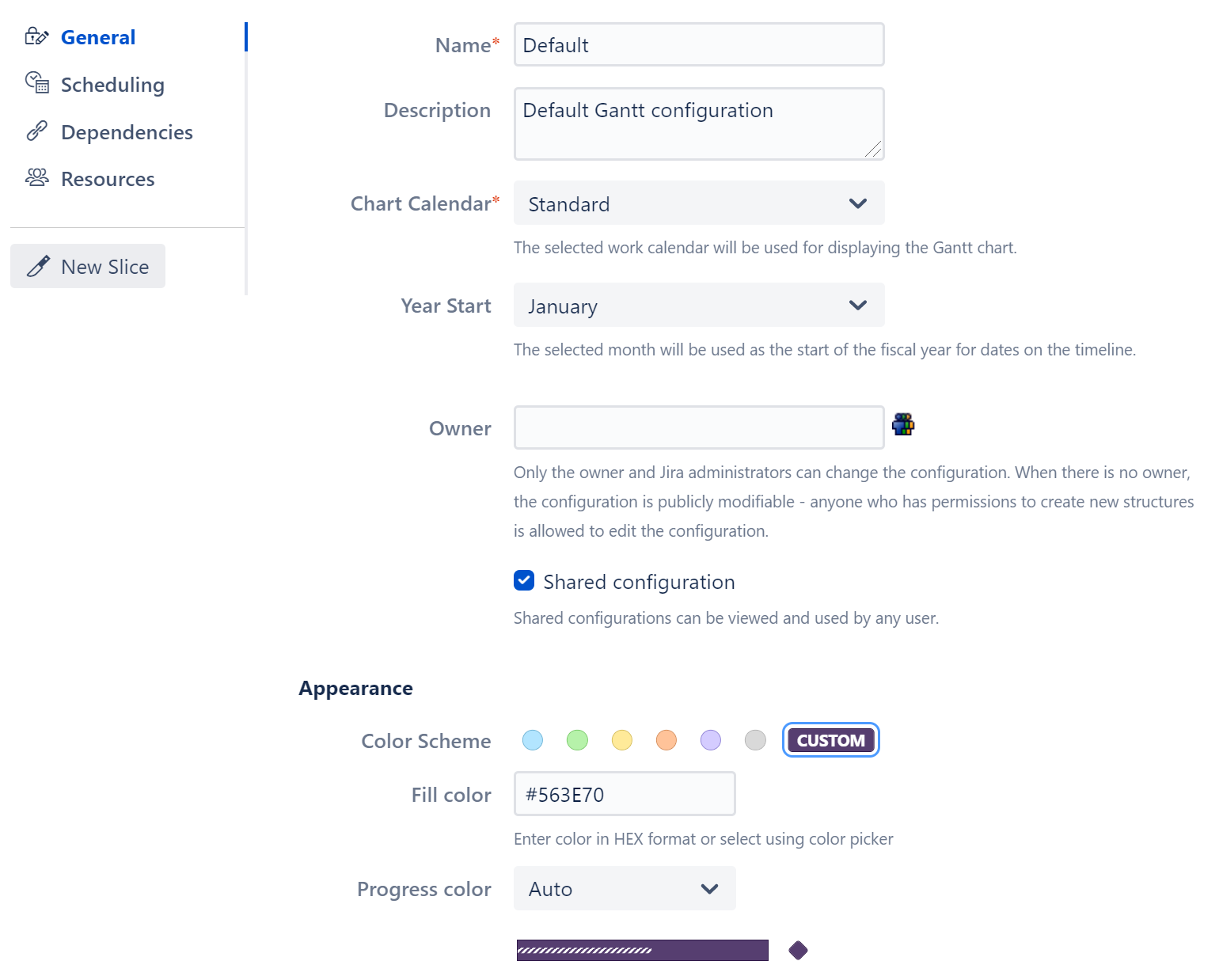In the General tab, you can define the essential elements of your Gantt chart configuration.
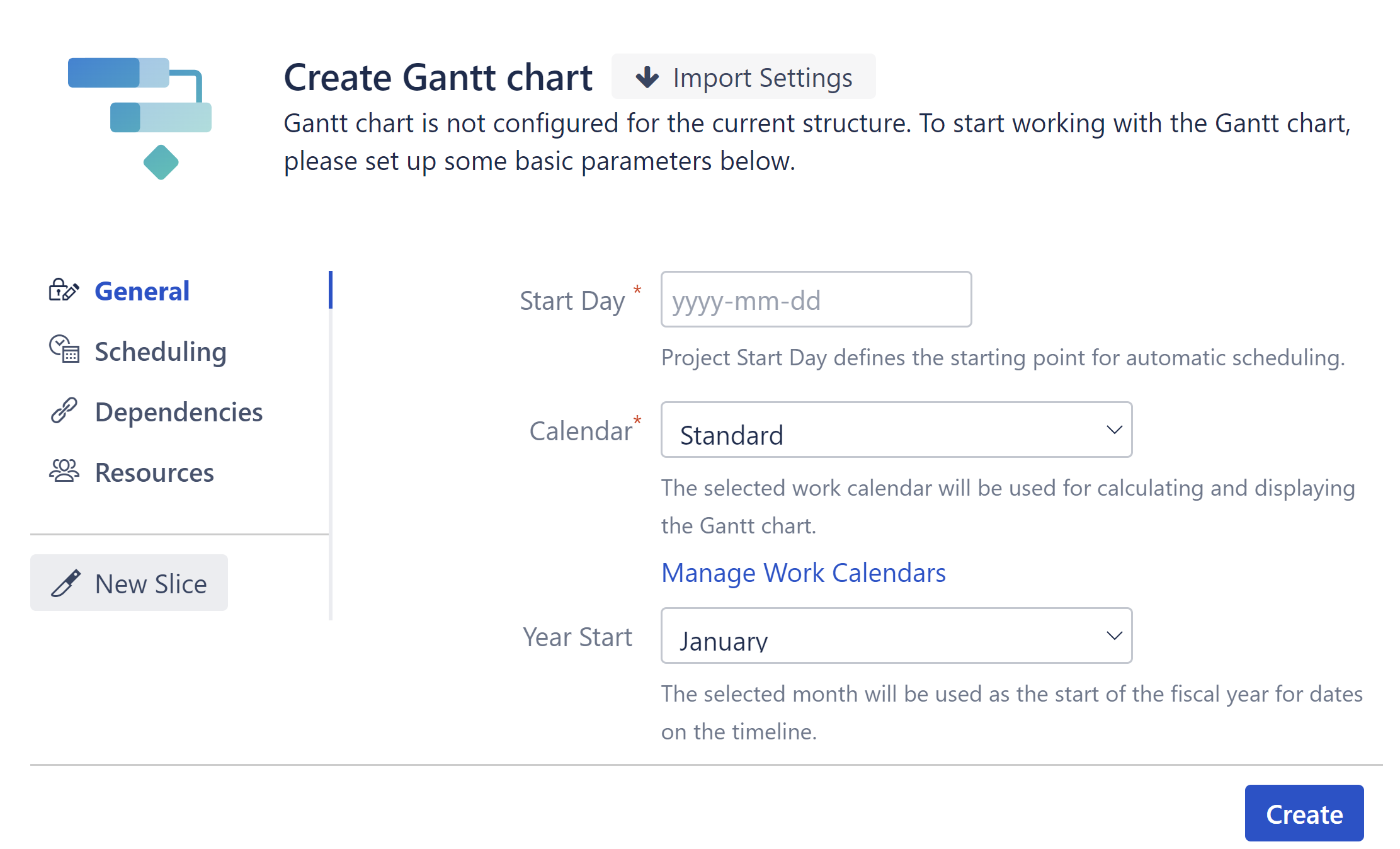
- Start Day - This is the day the project should begin. All automatic scheduling will be based on work estimates and dependencies, with the earliest issues beginning at this date.
- Calendar - Tasks within the chart will be scheduled based on the selected work calendar.
- Year Start - Dates displayed in the timeline will use the selected month as the start of the fiscal year, with the year assigned based on the end of the fiscal year period. For example, if you select November and the calendar year is 2020, then October (end of the fiscal period) is treated as 2020, and November (start of the new fiscal period) will be treated as 2021. To always display the actual calendar date, leave this set to "January."
- Appearance - Select the default look/color of your Gantt chart.
- Fix Version Timeline Settings - Project fix versions that will be displayed in the Gantt timeline.
- Sprint start day/Duration - The default day of the week sprints begin, and the default duration of sprints for Agile tasks.
- Import Settings (top of the screen) - Import the Gantt configuration from another structure. See Import Settings.
Appearance
The appearance section allows you to customize the way task bars appear in the Gantt chart. You can select one of the predefined color schemes, or choose a custom color scheme to match your company style:
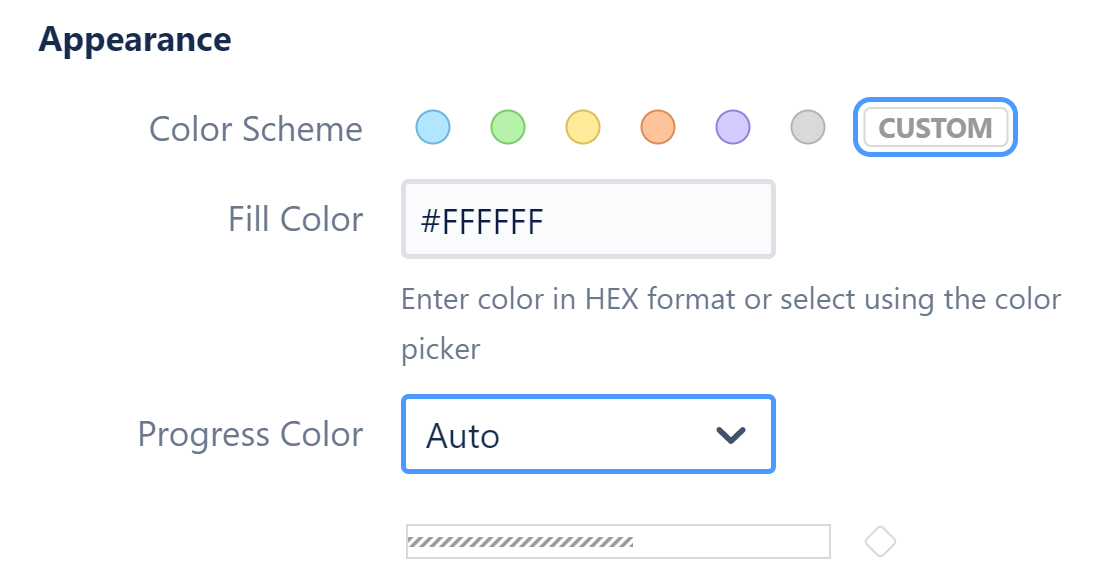
Fix Versions
Structure.Gantt can also place markers at the top of your timeline to show Fix Versions.
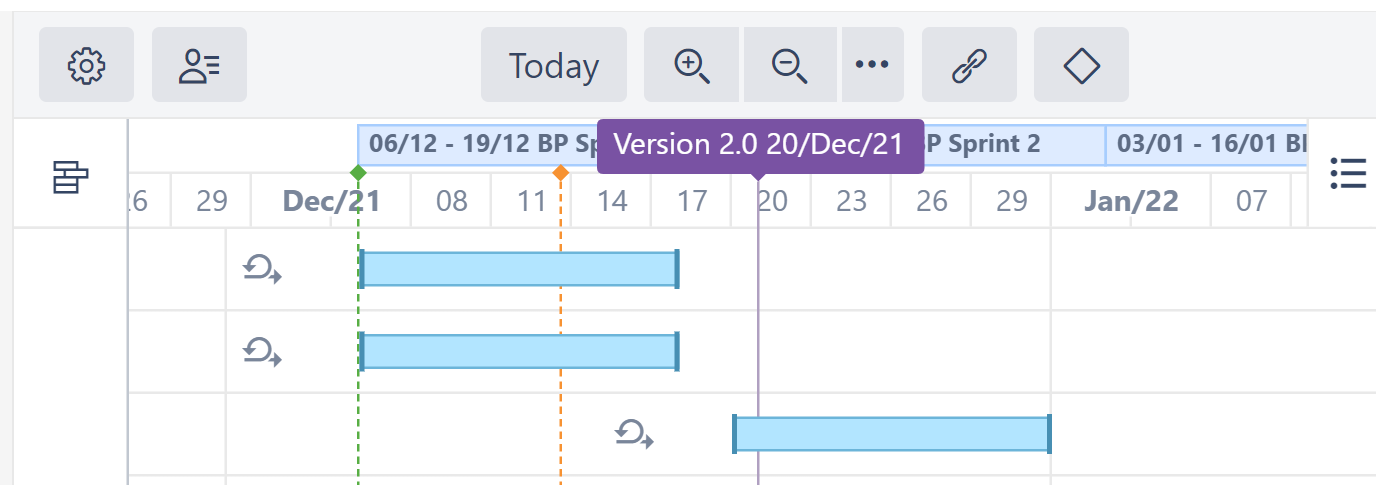
To enable this feature, simply enter the projects you want to show fix versions from.

In the event that the same version with the same release date is defined for multiple selected projects, those will be merged into one single Fix Version. |
Sprints
Structure.Gantt is able to visualize past, current and future sprints.
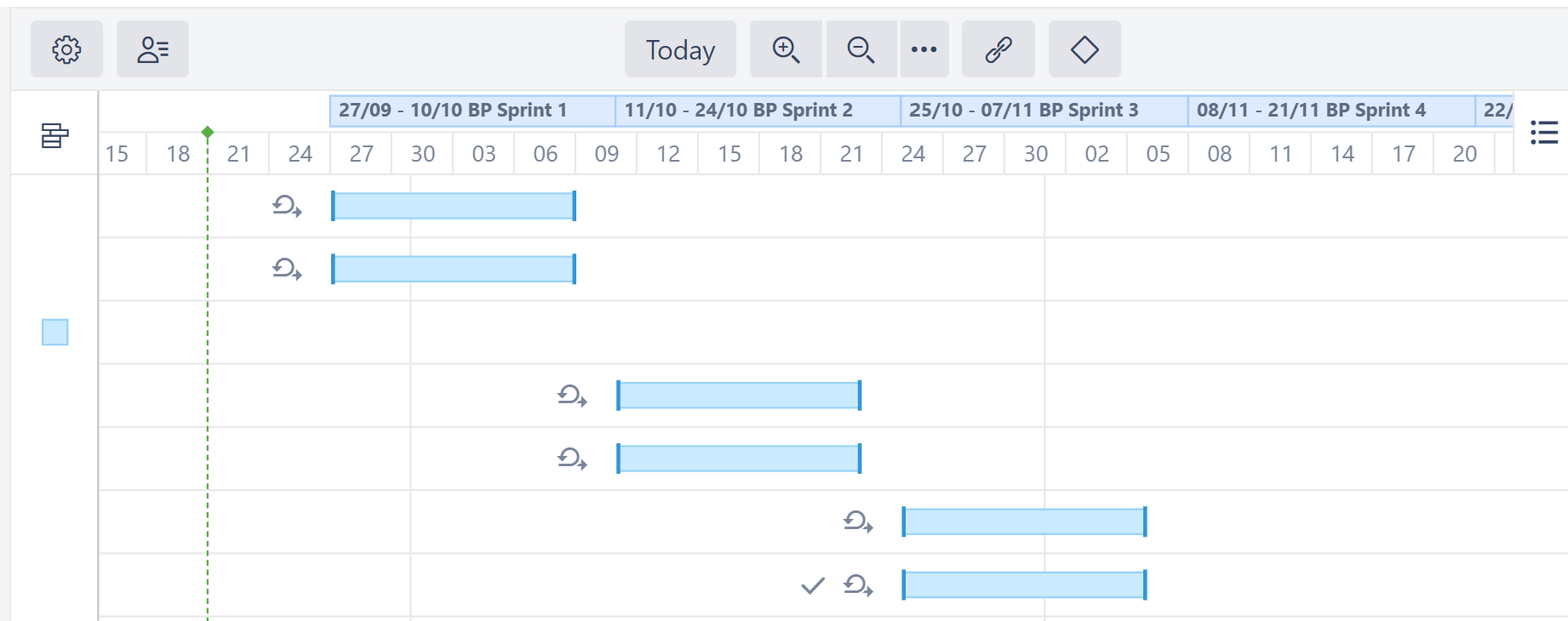
To configure future sprints, you need to specify:
- Sprint start day - the day of the week your sprints usually start on
- Duration - how long sprint lasts, in weeks

Future Sprint Scheduling
The first future sprint is scheduled for the Sprint start day immediately following the end of the active sprint. If the active sprint ends on the same day of the week as the Sprint start day, Structure.Gantt will visualize the active sprint ending on the previous day.
Future sprints are scheduled for the specified duration, and each additional future sprint begins immediately following the previous.
| If there is no active sprint, Structure.Gantt will base future sprints on the Planned Finish Date of the latest closed sprint. If there are no closed sprints, future sprints will begin on the first Sprint start day following the Project start date. |
| On your chart, there may be a gap between the active sprint and the first future sprint, based on the specified Sprint start day and the planned finish date for the active sprint. This is done to keep your start days consistent. |
Custom Sprint Schedules
You can also create custom schedules for sprints from specific boards. To add a custom schedule, click the Add sprints configuration link.
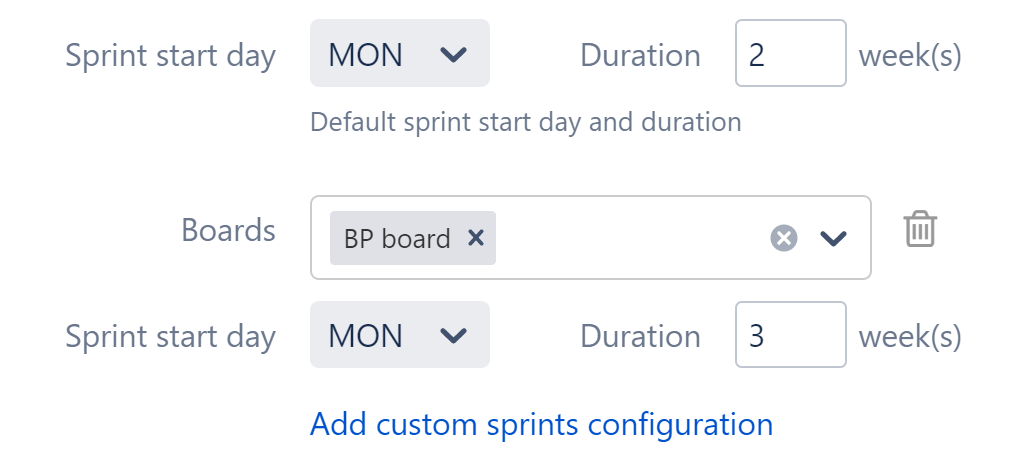
In the example above, any sprints from the BP board will have a 3 week duration. All other sprints will use the default configuration (2 weeks).
